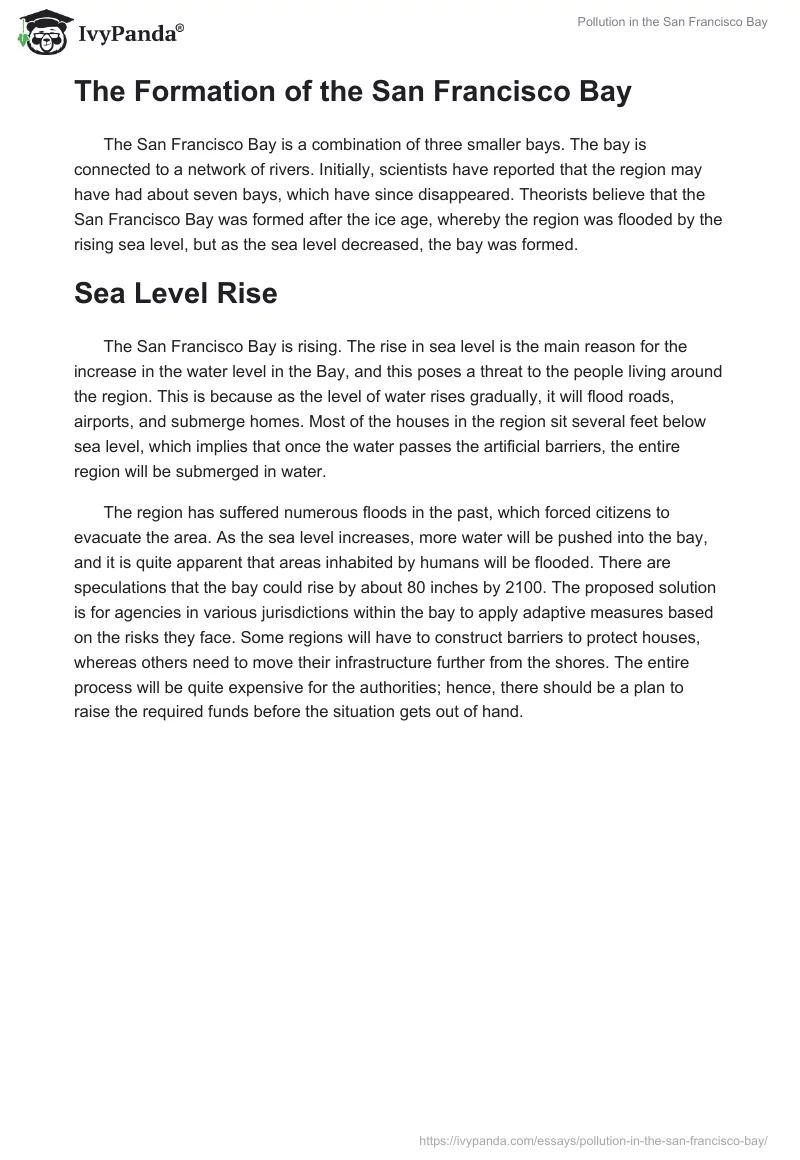Toxic Waters
The Hatfield Ferry Power Plant in Mason Town, Pennsylvania had been one of the major air polluters in the small town, but efforts from citizens and various environmental agencies saw the authorities compelling the company to install mechanisms that would filter their fumes. This was applied, and it led to the company having a lower level of chlorofluorocarbons (CFCs) and other pollutants. However, the installed technology uses water to trap the chemicals, which are later released into the nearby rivers.
The rivers provide fresh water for domestic use to many civilians, and it is apparent that the authorities have given the power plant the freedom to test the quantity of chemicals in the waste water. This implies that there is no entity that is conducting independent tests to determine the type of chemicals being released into the rivers. This case reveals that the reduction of air pollution is translating to higher levels of water pollution.
Saving the Bay
Wetlands in San Francisco Bay are under restoration programs, but one of the prevailing issues is mercury pollution in the region. It is apparent that restoration practices might facilitate the development of a higher level of mercury pollution. The main concern is whether mercury deposits from agricultural farms and the industrial sectors make its way through to plants and are consumed by humans.
Water pollution is one of the major issues that the region has to address in the quest of expanding its wetlands. This implies that agricultural runoff, industrial pollution, legacy pollution from mines, urban storm water runoff, and sewage must be treated appropriately to reduce the amount of mercury and dangerous chemicals in the wetlands.
The Formation of the San Francisco Bay
The San Francisco Bay is a combination of three smaller bays. The bay is connected to a network of rivers. Initially, scientists have reported that the region may have had about seven bays, which have since disappeared. Theorists believe that the San Francisco Bay was formed after the ice age, whereby the region was flooded by the rising sea level, but as the sea level decreased, the bay was formed.
Sea Level Rise
The San Francisco Bay is rising. The rise in sea level is the main reason for the increase in the water level in the Bay, and this poses a threat to the people living around the region. This is because as the level of water rises gradually, it will flood roads, airports, and submerge homes. Most of the houses in the region sit several feet below sea level, which implies that once the water passes the artificial barriers, the entire region will be submerged in water.
The region has suffered numerous floods in the past, which forced citizens to evacuate the area. As the sea level increases, more water will be pushed into the bay, and it is quite apparent that areas inhabited by humans will be flooded. There are speculations that the bay could rise by about 80 inches by 2100. The proposed solution is for agencies in various jurisdictions within the bay to apply adaptive measures based on the risks they face. Some regions will have to construct barriers to protect houses, whereas others need to move their infrastructure further from the shores. The entire process will be quite expensive for the authorities; hence, there should be a plan to raise the required funds before the situation gets out of hand.


